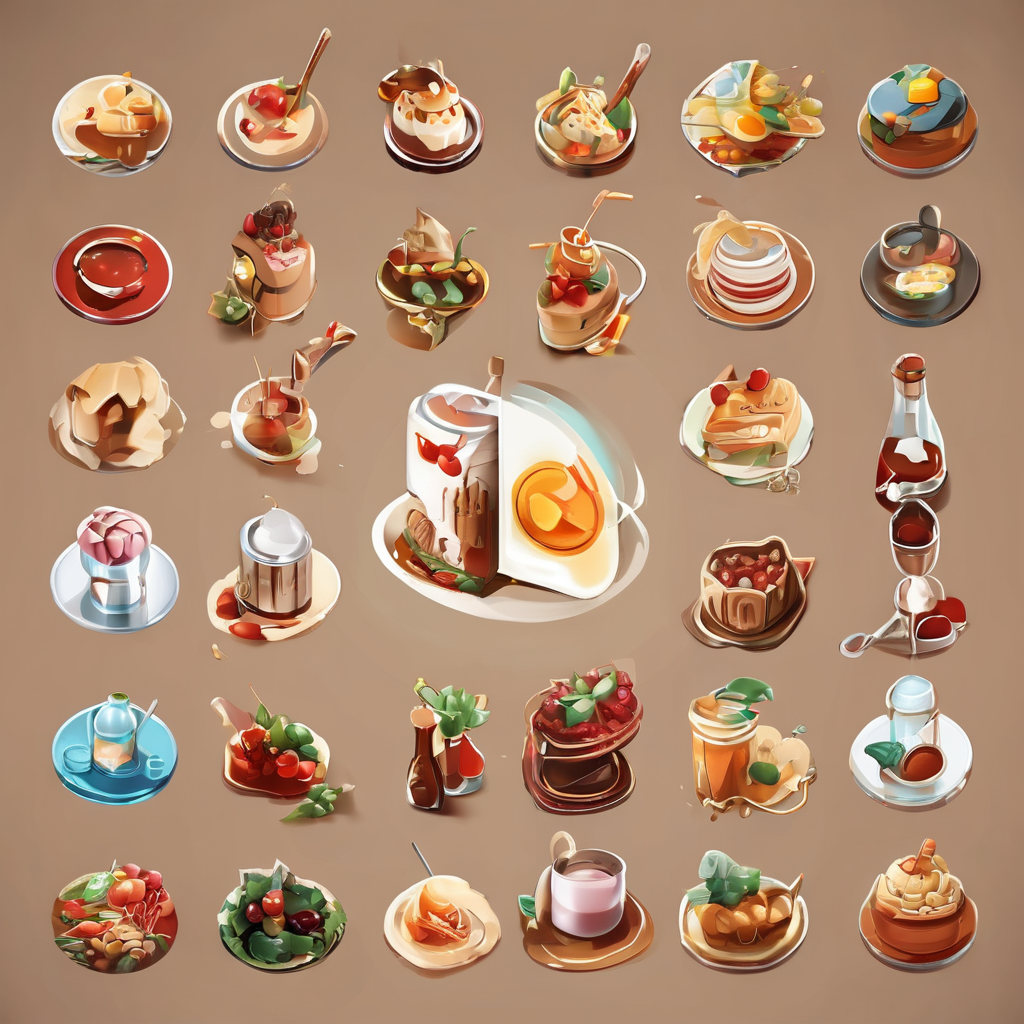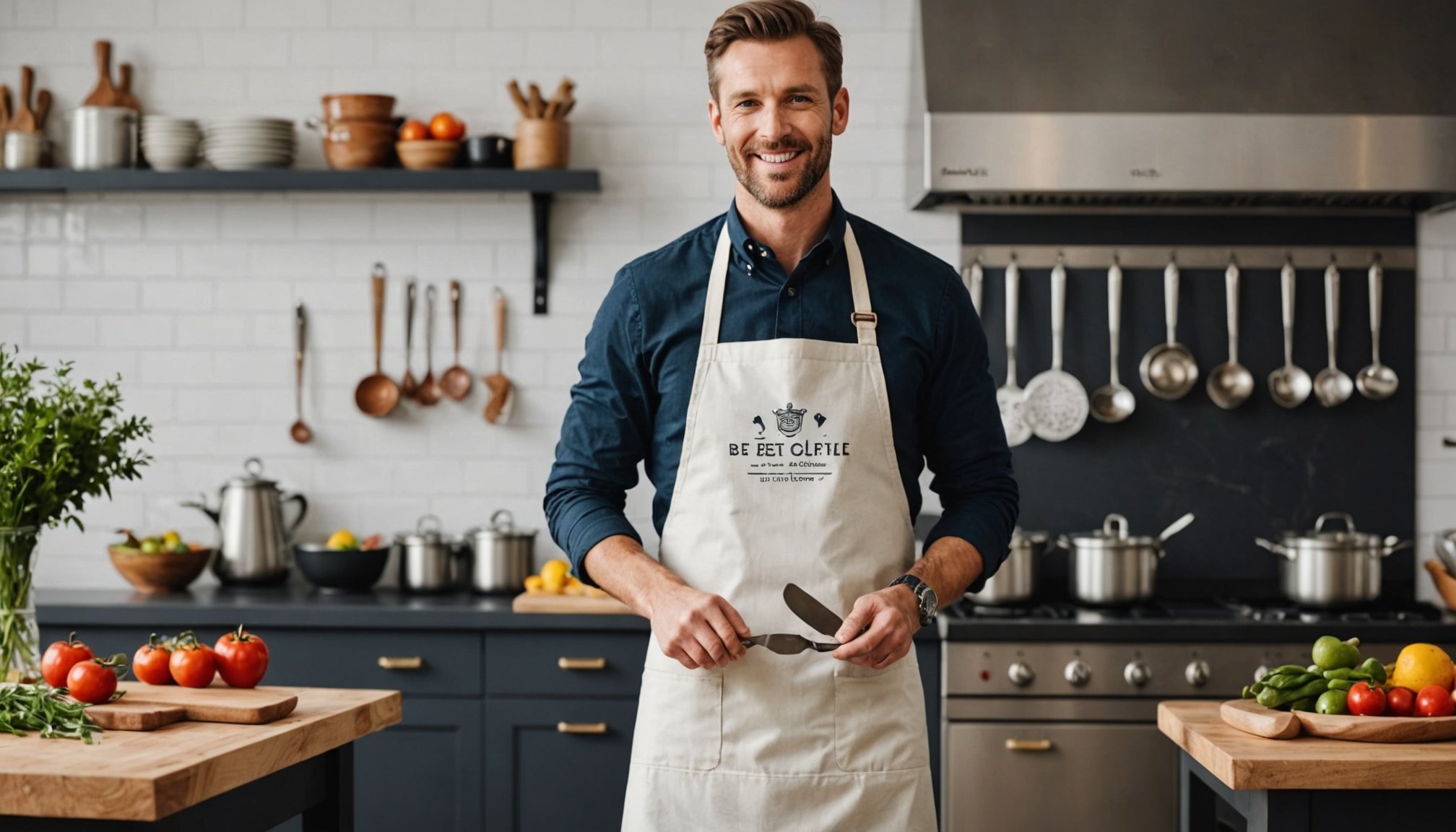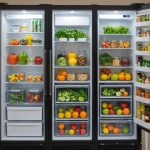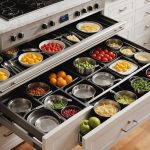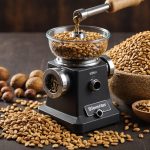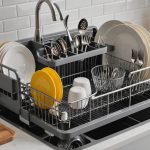Overview of Apron Styles
When exploring apron styles, it’s vital to consider both function and fashion. Several common types stand out, each catering to distinct needs in the culinary world.
Bib aprons are perhaps the most versatile. Covering the torso to the knees, they suit a variety of cooking activities, offering full coverage that protects clothing from spills and splashes. Their all-encompassing design makes them an ideal choice for home cooks and professional chefs alike.
Also to read : Revolutionize your dishwashing experience: boost water conservation with an innovative high-efficiency dish rack
On the other hand, waist aprons are more casual. Covering only the lower body, they allow greater freedom of movement, making them well-suited for waitstaff and bakers who prioritize accessibility over full-body protection. They bring a touch of elegance to serving environments while keeping essentials within easy reach through added pockets.
For those in the thick of culinary action, chef’s aprons are indispensable. Typically featuring additional pockets and robust materials, they stand up to the rigors of dynamic kitchen environments. Their design focuses keenly on functionality, often incorporating adjustable straps and reinforced seams.
Also to see : Unlocking blender selection secrets: effortlessly choose the ideal model for crushing nuts and seeds
Choosing an apron involves blending aesthetic appeal with practical functionality, ensuring style harmonises with the demands of the cooking environment.
Material Recommendations for Aprons
When it comes to apron materials, selecting the right fabric is crucial for durability and comfort. Often, aprons are crafted from cotton, polyester, and canvas, each offering distinct benefits.
Cotton aprons are popular for their breathability and comfort, making them ideal for long days in the kitchen. However, they might not provide the same level of stain resistance as other fabrics.
Polyester, meanwhile, is celebrated for its stain-resistant properties and ease of care, though it may lack the natural softness of cotton. It’s a practical choice for environments where spills are frequent.
Canvas aprons stand out for their durability. The sturdy fabric is excellent for jobs requiring a tough barrier against heat and heavy stains. This choice balances robustness with reasonable comfort.
When choosing fabrics, consider the nature of your kitchen tasks. Cotton suits those prioritising ease against the skin, polyester for hassle-free maintenance, and canvas for heavy-duty protection.
Lastly, assess personal comfort and care needs. Some fabrics require specific washing conditions, and knowing how to care appropriately for your apron will ensure it serves well for years. Proper fabric choices significantly impact both functionality and apron longevity.
Features to Consider in Apron Selection
When choosing culinary aprons, it’s crucial to consider essential features that enhance practicality in the kitchen. Elements like pockets, adjustable straps, and appropriate length significantly contribute to user convenience.
Essential Features
Pockets are a functional addition, providing storage for utensils or recipes, keeping busy hands free for more pressing tasks. For many, multiple pockets are invaluable during hectic cooking sessions, offering easy access to kitchen tools.
Adjustable straps offer a tailored fit, accommodating varying body types and preferences. A well-fitted apron ensures comfort and ease of movement, crucial for seamless kitchen activities.
The length of an apron also plays a role in its effectiveness. Longer aprons provide more coverage, protecting clothing from unexpected splashes, while shorter lengths allow greater mobility, especially for tasks like grilling.
Enhancing Practicality
Consider specific cooking activities when evaluating these features. For instance, a baking apron might prioritize ease of movement with less emphasis on length, while a grilling apron may focus on maximum coverage and protection.
These thoughtful apron features not only increase functionality but also contribute to a more enjoyable cooking experience, tailored to individual needs and tasks.
Selecting an Apron Based on Cooking Activities
When choosing aprons for specific cooking activities, consider the demands of each task. Baking aprons, for example, often prioritise comfort and ease of movement. This is essential for activities like kneading or mixing. These aprons may lean towards shorter lengths with less coverage, aiding in effortless manoeuvring around the kitchen.
Conversely, grilling aprons require a greater degree of protection. They typically come with durable, heat-resistant materials to shield wearers from sparks and splashes. Long lengths offer additional coverage, and features like pockets are invaluable for quick access to grilling tools.
For those seeking versatility, consider multi-functional aprons that can adapt to various cooking styles. These aprons might offer a balance between comfort and protection, with reinforced seams for durability and adjustable straps for a custom fit. Bib aprons are a popular choice for their adaptability in both baking and grilling environments.
Ultimately, selecting the right apron hinges on evaluating the level of protection needed and the nature of your cooking activities. Keep these factors in mind to ensure a blend of functionality and style that meets your culinary needs.
User Testimonials and Reviews
Exploring apron reviews reveals valuable insights into customer satisfaction and user experiences. By understanding both positive experiences and challenges, we can guide new buyers toward the best choices.
Positive Experiences
Many users praise apron styles for blending comfort and functionality seamlessly. They often highlight specific features such as adjustable straps and multiple pockets enhancing their culinary tasks. Customers find these additions particularly beneficial, attributing increased efficiency and overall enjoyment to their cooking routines.
Challenges Encountered
However, some users report challenges with certain fabric choices. Issues often arise with durability, particularly in high-intensity kitchens, where cotton aprons may not withstand frequent stains or heat as well as anticipated. Polyester aprons, while easy to maintain, might lack the softness desired by some wearers. User feedback suggests exploring alternative apron types with reinforced seams for longevity.
Overall Satisfaction
Overall, the general trend in user satisfaction leans positively towards aprons that balance quality with affordability. Feedback often points to a favourable price versus quality ratio for thoughtfully designed aprons, especially those offering robust features and durable materials. Considering these user experiences can guide future purchases to meet personal needs effectively.
Maintenance Tips for Long-lasting Apron Use
Proper apron maintenance is essential to ensure their longevity and effectiveness in the kitchen. Understanding the best practices for cleaning and upkeep can significantly extend the life of your culinary aprons.
Cleaning Practices: Different apron materials require specific care methods. Cotton aprons should be washed with warm water and mild detergent to preserve their softness. For polyester aprons, using cold water and avoiding high heat during drying prevents shrinkage and maintains stain resistance. Canvas materials are best spot-cleaned to avoid fabric wear, ensuring they remain durable for heavy-duty tasks.
Storage Solutions: Store aprons in a cool, dry place away from direct sunlight to prevent colour fading. Hanging them or folding them neatly can maintain their shape and reduce wrinkles, facilitating quick access during a cooking rush.
Maintenance Tips: Regularly check for wear and tear, especially on adjustable straps and pocket seams. Repair minor damages promptly to prevent them from worsening. Consider applying fabric protectants to improve resistance against spills for a more practical daily use.
By following these care tips, you can ensure your aprons remain a reliable kitchen companion, blending style with durability.
